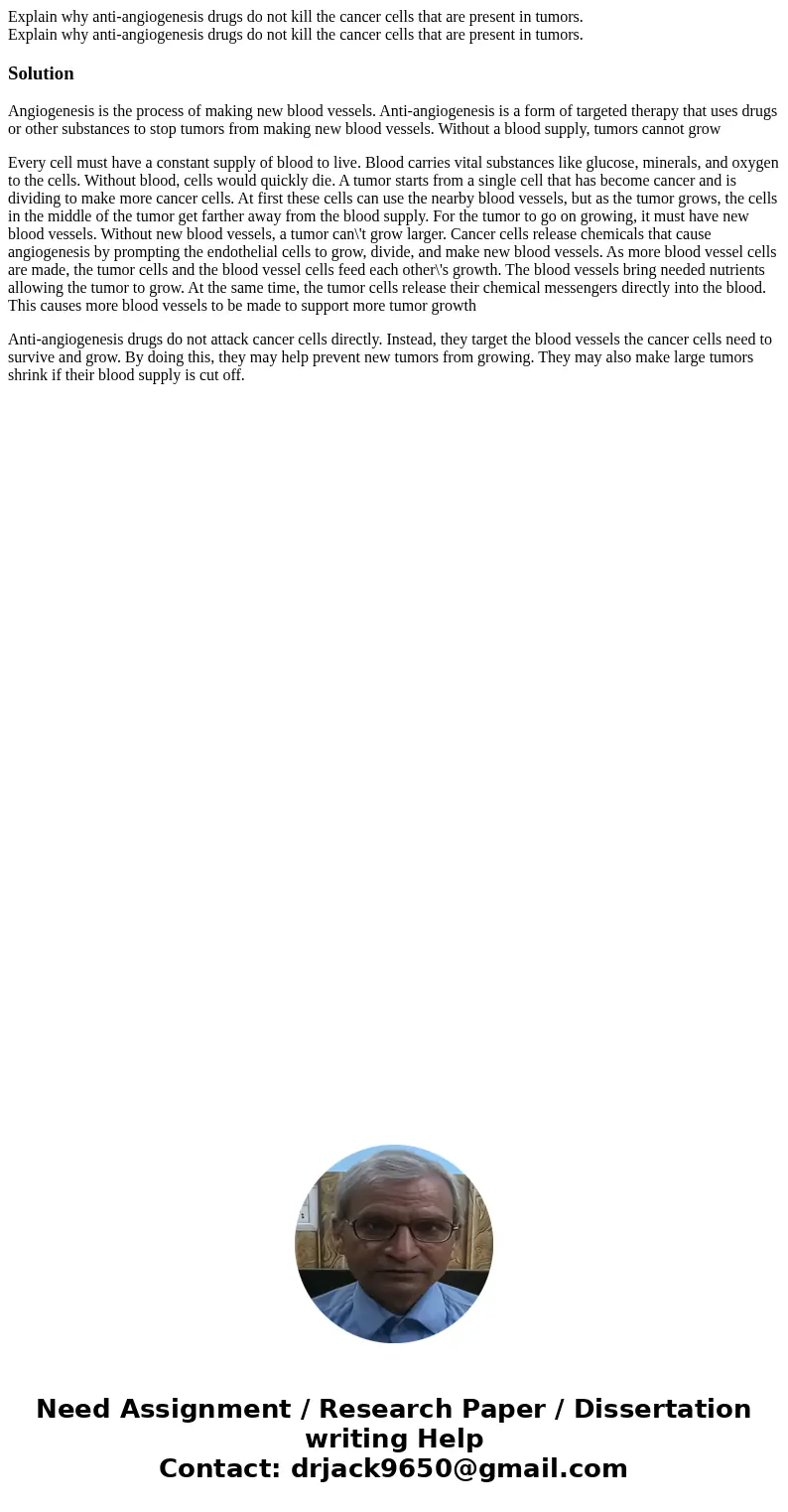Explain why antiangiogenesis drugs do not kill the cancer ce
Solution
Angiogenesis is the process of making new blood vessels. Anti-angiogenesis is a form of targeted therapy that uses drugs or other substances to stop tumors from making new blood vessels. Without a blood supply, tumors cannot grow
Every cell must have a constant supply of blood to live. Blood carries vital substances like glucose, minerals, and oxygen to the cells. Without blood, cells would quickly die. A tumor starts from a single cell that has become cancer and is dividing to make more cancer cells. At first these cells can use the nearby blood vessels, but as the tumor grows, the cells in the middle of the tumor get farther away from the blood supply. For the tumor to go on growing, it must have new blood vessels. Without new blood vessels, a tumor can\'t grow larger. Cancer cells release chemicals that cause angiogenesis by prompting the endothelial cells to grow, divide, and make new blood vessels. As more blood vessel cells are made, the tumor cells and the blood vessel cells feed each other\'s growth. The blood vessels bring needed nutrients allowing the tumor to grow. At the same time, the tumor cells release their chemical messengers directly into the blood. This causes more blood vessels to be made to support more tumor growth
Anti-angiogenesis drugs do not attack cancer cells directly. Instead, they target the blood vessels the cancer cells need to survive and grow. By doing this, they may help prevent new tumors from growing. They may also make large tumors shrink if their blood supply is cut off.

 Homework Sourse
Homework Sourse